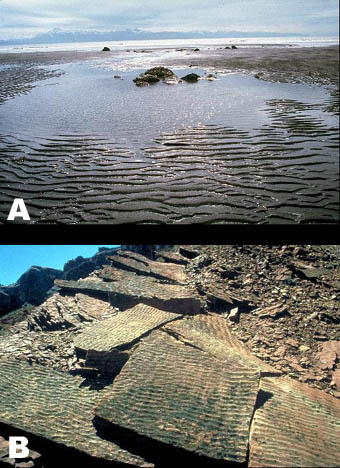Ripples in beach sand , such as those in the upper photograph (A) may someday become a rock like the sandstone in the lower photograph (B). This sandstone was part of a beach over 200 million years ago in the Triassic period.
Click on image for full size
Both images courtesy of Martin Miller, University of Oregon
What Is a Sedimentary Rock?
Have you ever been to the beach and nestled your toes in the sand? Over thousands of years that sand might become part of a sedimentary rock!
Sedimentary rocks make up about three-quarters of the rocks at the Earth’s surface. They form at the surface in environments such as beaches, rivers, the ocean, and anywhere that sand, mud, and other types of sediment collect. Sedimentary rocks preserve a record of the environments that existed when they formed. By looking at sedimentary rocks of different ages, scientists can figure out how climate and environments have changed through Earth’s history. Fossils of ancient living things are preserved in sedimentary rocks too.
Many sedimentary rocks are made from the broken bits of other rocks. These are called clastic sedimentary rocks. The broken bits of rocks are called sediment. Sediment is the sand you find at the beach, the mud in a lake bottom, the pebbles in a river, and even the dust on furniture. The sediment may, in time, form a rock if the little pieces become cemented together.
There are other types of sedimentary rocks whose particles do not come from broken rock fragments. Chemical sedimentary rocks are made of mineral crystals such as halite and gypsum formed by chemical processes. The sediment particles of organic sedimentary rocks are the remains of living things such as clamshells, plankton skeletons, dinosaur bones, and plants.
You might also be interested in:
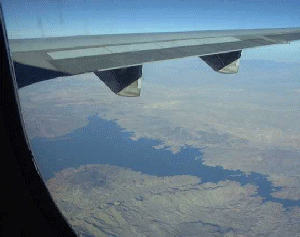
Rivers are very important to Earth because they are major forces that shape the landscape. Also, they provide transportation and water for drinking, washing and farming. Rivers can flow on land or underground
...more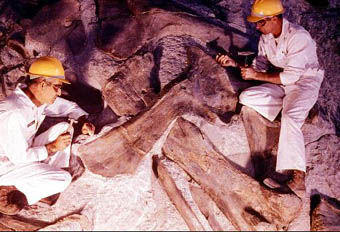
Fossils are evidence of ancient life preserved in sedimentary rocks. On Earth, they are clues to what living things, ecosystems, and environments were like in the past. The oldest fossils are from mats
...more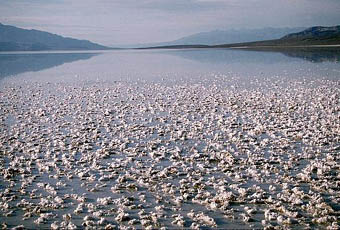
Unlike most other sedimentary rocks, chemical rocks are not made of pieces of sediment. Instead, they have mineral crystals made from elements that are dissolved in water. The water in the oceans, lakes,
...more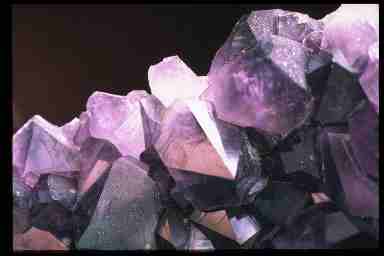
Minerals are the building blocks of rocks. They are non-living, solid, and, like all matter, are made of atoms of elements. There are many different types of minerals and each type is made of particular
...more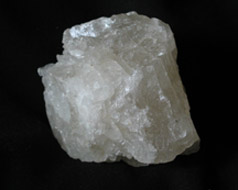
What’s that on your chips? It’s a mineral called halite! If you look closely at ordinary table salt, you will see that, just like other minerals, it looks like crystals. Halite is salt. In its natural
...more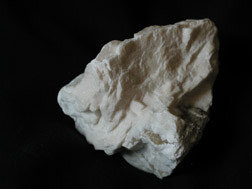
You can find gypsum in sedimentary rocks, deserts, and caves. Large amounts can form in layers on a salty sea or lake bottom when water evaporates leaving the mineral behind. Gypsum sometimes forms when
...more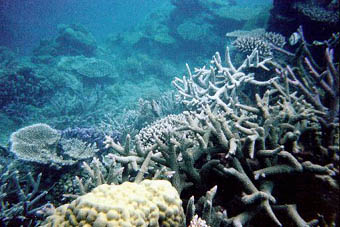
The sediment in an organic sedimentary rock is made of fossils! The hard parts of animals, such as bones and shells, can become cemented together over time to make rock. Usually the bones and shells are
...more


